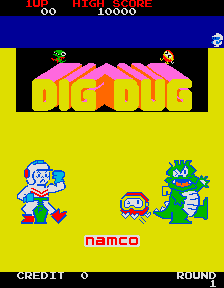Dig Dug (rev 2)
Game Information
| manufacturer | Namco |
| year | 1982 |
| cloned by | digdug1 digdugat digdugat1 digsid dzigzag |
| genre | Maze |
| downloads | 1019 |
Screenshots










Download Details
| split set | digdug.zip 27.81k |
| bios/device | namco51.zip 716.00b |
| bios/device | namco53.zip 675.00b |
| merged set | digdug.7z 28.06k |
| standalone set | digdug.7z 24.78k |
| artwork | digdug.zip 7.06m |
Driver Details
| source | namco/galaga.cpp |
| status | good |
| emulation | good |
| savestate | supported |
Series Details
Screen Details
| display | screen |
| type | raster |
| orientation | horizontal |
| width | 288px |
| height | 224px |
| refresh | 60.61mhz |
Input Details
| player | 1 |
| type | joy |
| buttons | 1 |
| directions | 4 |
| player | 2 |
| type | joy |
| buttons | 1 |
| directions | 4 |
Chipset Details
| name | Zilog Z80 |
| clock | 2.93mhz |
| name | Zilog Z80 |
| clock | 2.93mhz |
| name | Zilog Z80 |
| clock | 2.93mhz |
| name | Fujitsu MB8843 |
| clock | 1.46mhz |
| name | Fujitsu MB8843 |
| clock | 1.46mhz |
| name | Speaker |
| clock | N/A |
| name | Namco |
| clock | 93.75khz |
ROM Details
| name | size | crc |
|---|---|---|
| dd1a.1 | 4.00k | a80ec984 |
| dd1a.2 | 4.00k | 559f00bd |
| dd1a.3 | 4.00k | 8cbc6fe1 |
| dd1a.4 | 4.00k | d066f830 |
| dd1a.5 | 4.00k | 6687933b |
| dd1a.6 | 4.00k | 843d857f |
| dd1.7 | 4.00k | a41bce72 |
| dd1.9 | 2.00k | f14a6fe1 |
| dd1.15 | 4.00k | e22957c8 |
| dd1.14 | 4.00k | 2829ec99 |
| dd1.13 | 4.00k | 458499e9 |
| dd1.12 | 4.00k | c58252a0 |
| dd1.11 | 4.00k | 7b383983 |
| dd1.10b | 4.00k | 2cf399c2 |
| 136007.113 | 32.00b | 4cb9da99 |
| 136007.111 | 256.00b | 00c7c419 |
| 136007.112 | 256.00b | e9b3e08e |
| 136007.110 | 256.00b | 7a2815b4 |
| 136007.109 | 256.00b | 77245b66 |